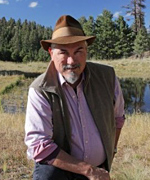 —Alan Dulaney
—Alan Dulaney
Last month, I wrote about how reluctant the U.S. Environmental Protection Agency seemed to be setting standards for the groups of compounds lumped as poly- or per-fluoroalkyl substances, or PFAS. Some states aren’t waiting for EPA. New Hampshire has issued its own MCLs, and they are remarkably stringent. Limits for four compounds are set: PFOA at 12 ppt, PFOS at 15 ppt, PFHxS at 18 ppt, and PFNA at 11 ppt. Not all that long ago, analytical techniques could not reach the ng/l (ppt) level. And Michigan is likewise considering very strict standards for this group of compounds. EPA could find itself left behind if several states decide to hurry up and promulgate their own standards. (Don’t forget — AHS is offering a valuable workshop on the PFAS situation on July 11. Sign up soon!)
Closer to home, ADEQ has issued a notice of rule-making affecting the Underground Storage Tank (UST) program (read the formal notice here). Basically, the new rules bring ADEQ up to date and equivalent to the EPA rules that appeared in 2015. Maintaining conformity means that ADEQ can retain state program approval from EPA. The major points appear to be a new plan review process for USTs for tank modifications, new installations, and permanent closures. Minor technical corrections in existing rules will also be updated. Some 6,000+ USTs are currently operating in Arizona.
ADEQ is still working on rules governing reclaimed water uses. Technical working groups will be submitting information on reclaimed standards, technology, and infrastructure. Input from three stakeholder listening sessions has already been gathered. ADEQ is also still looking at state assumption of the Clean Water Act 404 program. After the passage of SB 1494, ADEQ is now looking at obtaining primacy and thus full control of the Underground Injection Control program. Bringing the UIC program in line with the Aquifer Protection Permit program should reduce regulatory redundancy. Stakeholder groups are meeting. More information can be found here.
The Bureau of Reclamation has revised its modeling of the Colorado River system to incorporate the system conservation embedded in the Drought Contingency Plan, as well as the wet winter of 2019. The critical 24-month study will not be out until later in August, but probabilities of a declared Tier 1 shortage have dropped significantly. Salt River Project reports that its lakes on the Salt–Verde River system stand at 77% of storage capacity, water for years to come for SRP customers. SRP will not have to pump as much groundwater to meet demand.
It’s summertime, and the living is easy. We can take a collective deep breath, and plan for the future.